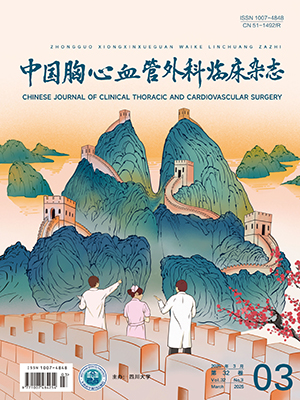| 1. |
Mosca S, Manes G, Martino R, et al. Endoscopic management of foreign bodies in the upper gastrointestinal tract: report on a series of 414 adult patients. Endoscopy, 2001, 33(8): 692-696.
|
| 2. |
Li ZS, Sun ZX, Zou DW, et al. Endoscopic management of foreign bodies in the upper-GI tract: experience with 1088 cases in China. Gastrointest Endosc, 2006, 64(4): 485-492.
|
| 3. |
Malick KJ. Endoscopic management of ingested foreign bodies and food impactions. Gastroenterol Nurs, 2013, 36(5): 359-365.
|
| 4. |
Bronstein AC, Spyker DA, Cantilena LR Jr, et al. 2007 Annual Report of the American Association of Poison Control Centers’ National Poison Data System (NPDS): 25th Annual Report. Clin Toxicol (Phila), 2008, 46(10): 927-1057.
|
| 5. |
Schunk JE, Harrison AM, Corneli HM, et al. Fluoroscopic foley catheter removal of esophageal foreign bodies in children: experience with 415 episodes. Pediatrics, 1994, 94(5): 709-714.
|
| 6. |
Zhang S, Cui Y, Gong X, et al. Endoscopic management of foreign bodies in the upper gastrointestinal tract in South China: a retrospective study of 561 cases. Dig Dis Sci, 2010, 55(5): 1305-1312.
|
| 7. |
ASGE Standards of Practice Committee, Ikenberry SO, Jue TL, et al. Management of ingested foreign bodies and food impactions. Gastrointest Endosc, 2011, 73(6): 1085-1091.
|
| 8. |
Sperry SL, Crockett SD, Miller CB, et al. Esophageal foreign-body impactions: epidemiology, time trends, and the impact of the increasing prevalence of eosinophilic esophagitis. Gastrointest Endosc, 2011, 74(5): 985-991.
|
| 9. |
Hachimi-Idrissi S, Corne L, Vandenplas Y. Management of ingested foreign bodies in childhood: our experience and review of the literature. Eur J Emerg Med, 1998, 5(3): 319-323.
|
| 10. |
Bekkerman M, Sachdev AH, Andrade J, et al. Endoscopic management of foreign bodies in the gastrointestinal tract: a review of the literature. Gastroenterol Res Pract, 2016, 2016: 8520767.
|
| 11. |
Geraci G, Sciume’ C, Di Carlo G, et al. Retrospective analysis of management of ingested foreign bodies and food impactions in emergency endoscopic setting in adults. BMC Emerg Med, 2016, 16(1): 42.
|
| 12. |
Mezzetto L, Treppiedi E, Scorsone L, et al. Thoracic aortic pseudoaneurysm after esophageal perforation and mediastinitis caused by accidental ingestion of a mutton bone: a case report on staged endoscopic and endovascular treatments. Ann Vasc Surg, 2016, 30: 307.
|
| 13. |
Berry AC, Draganov PV, Patel BB, et al. Embedded pork bone causing esophageal perforation and an esophagus-innominate artery fistula. Case Rep Gastrointest Med, 2014, 2014: 969862.
|
| 14. |
Arana A, Hauser B, Hachimi-Idrissi S, et al. Management of ingested foreign bodies in childhood and review of the literature. Eur J Pediatr, 2001, 160(8): 468-472.
|
| 15. |
Chauvin A, Viala J, Marteau P, et al. Management and endoscopic techniques for digestive foreign body and food bolus impaction. Dig Liver Dis, 2013, 45(7): 529-542.
|
| 16. |
Takada M, Kashiwagi R, Sakane M, et al. 3D-CT diagnosis for ingested foreign bodies. Am J Emerg Med, 2000, 18(2): 192-193.
|
| 17. |
Triadafilopoulos G, Roorda A, Akiyama J. Update on foreign bodies in the esophagus: diagnosis and management. Curr Gastroenterol Rep, 2013, 15(4): 317.
|
| 18. |
Tokar B, Cevik AA, Ilhan H. Ingested gastrointestinal foreign bodies: predisposing factors for complications in children having surgical or endoscopic removal. Pediatr Surg Int, 2007, 23(2): 135-139.
|
| 19. |
Kim JK, Kim SS, Kim JI, et al. Management of foreign bodies in the gastrointestinal tract: an analysis of 104 cases in children. Endoscopy, 1999, 31(4): 302-304.
|
| 20. |
Gmeiner D, von Rahden BH, Meco C, et al. Flexible versus rigid endoscopy for treatment of foreign body impaction in the esophagus. Surg Endosc, 2007, 21(11): 2026-2029.
|
| 21. |
Brinster CJ, Singhal S, Lee L, et al. Evolving options in the management of esophageal perforation. Ann Thorac Surg, 2004, 77(4): 1475-1483.
|
| 22. |
Shaker H, Elsayed H, Whittle I, et al. The influence of the 'golden 24-h rule' on the prognosis of oesophageal perforation in the modern era. Eur J Cardiothorac Surg, 2010, 38(2): 216-222.
|
| 23. |
Vallböhmer D, Hölscher AH, Hölscher M, et al. Options in the management of esophageal perforation: analysis over a 12-year period. Dis Esophagus, 2010, 23(3): 185-190.
|
| 24. |
Biancari F, D’Andrea V, Paone R, et al. Current treatment and outcome of esophageal perforations in adults: systematic review and meta-analysis of 75 studies. World J Surg, 2013, 37(5): 1051-1059.
|
| 25. |
Qadeer MA, Dumot JA, Vargo JJ, et al. Endoscopic clips for closing esophageal perforations: case report and pooled analysis. Gastrointest Endosc, 2007, 66(3): 605-611.
|
| 26. |
Freeman RK, Van Woerkom JM, Ascioti AJ. Esophageal stent placement for the treatment of iatrogenic intrathoracic esophageal perforation. Ann Thorac Surg, 2007, 83(6): 2003-2007.
|
| 27. |
Hung CW, Hung SC, Lee CJ, et al. Risk factors for complications after a foreign body is retained in the esophagus. J Emerg Med, 2012, 43(3): 423-427.
|
| 28. |
Chaves DM, Ishioka S, Félix VN, et al. Removal of a foreign body from the upper gastrointestinal tract with a flexible endoscope: a prospective study. Endoscopy, 2004, 36(10): 887-892.
|
| 29. |
Lai AT, Chow TL, Lee DT, et al. Risk factors predicting the development of complications after foreign body ingestion. Br J Surg, 2003, 90(12): 1531-1535.
|
| 30. |
Sung SH, Jeon SW, Son HS, et al. Factors predictive of risk for complications in patients with esophageal foreign bodies. Dig Liver Dis, 2011, 43(8): 632-635.
|




